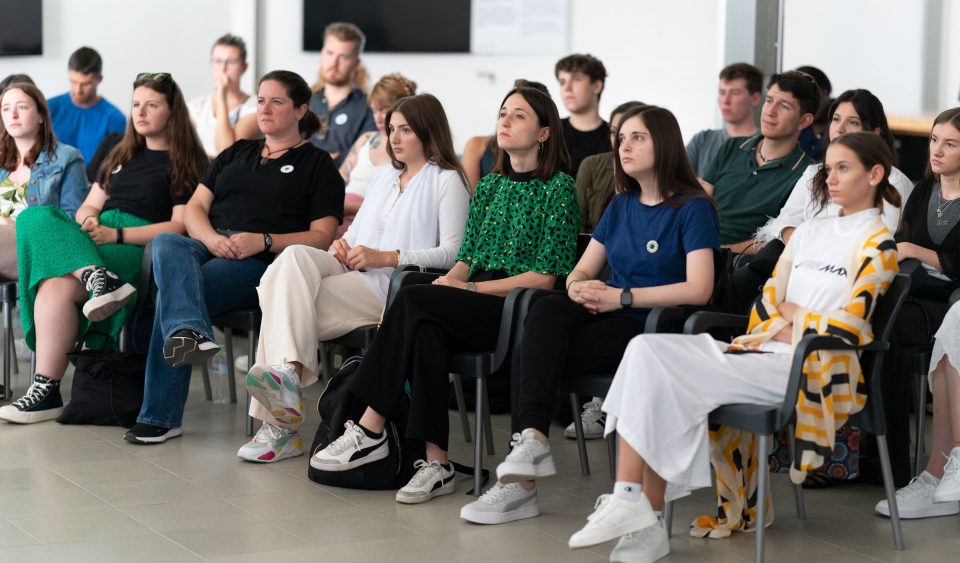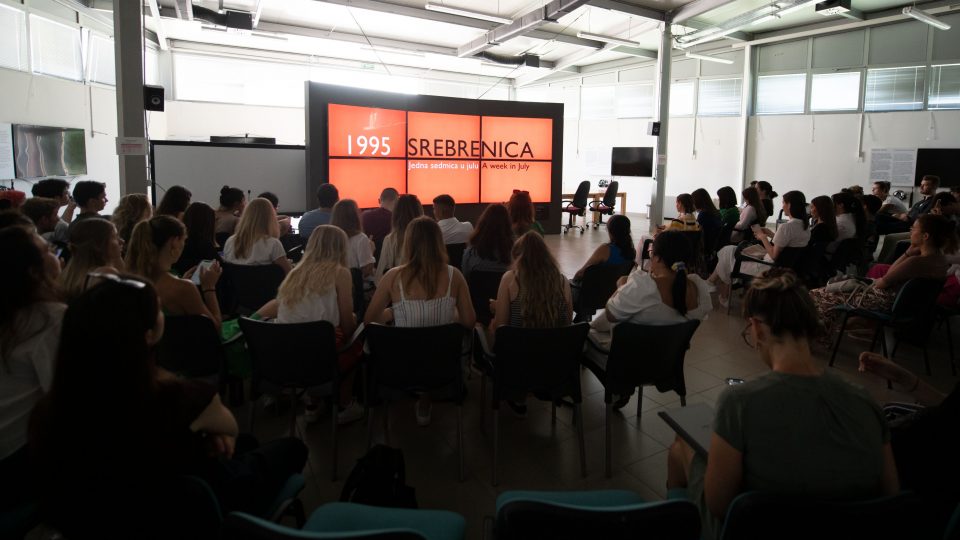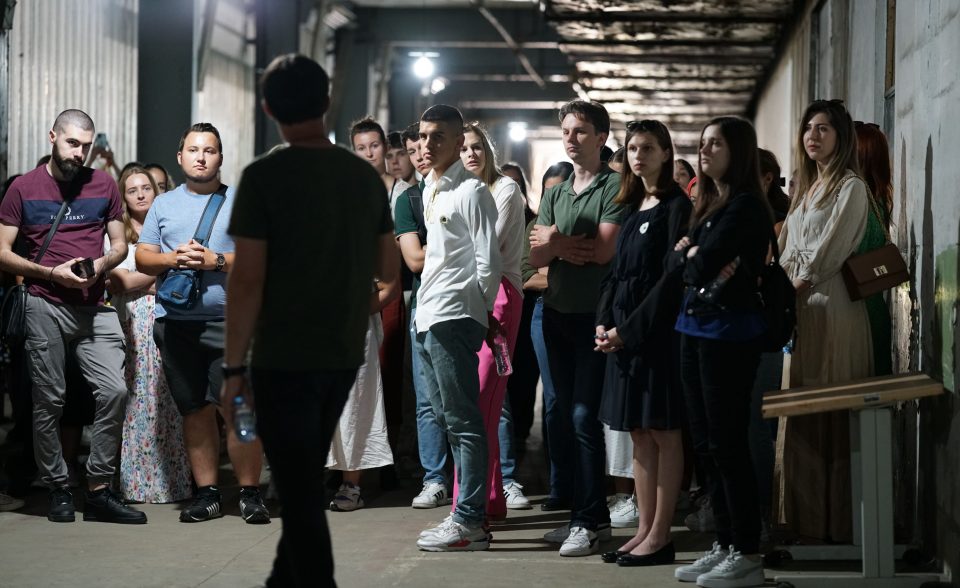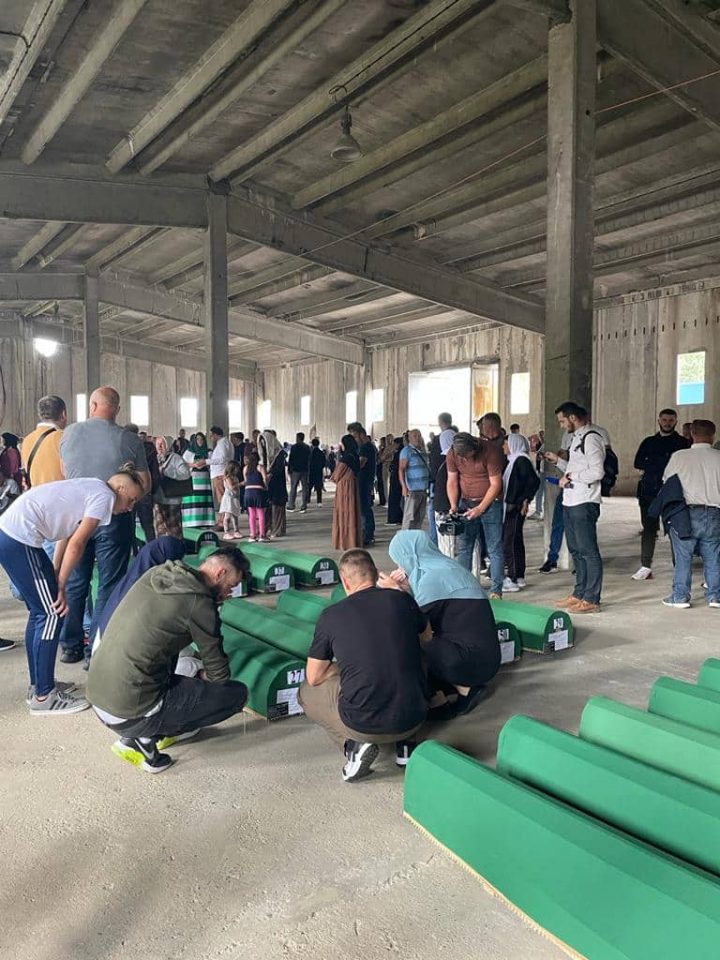
The third edition of the Srebrenica Youth School, which was held as part of the 27th anniversary of the genocide in Srebrenica, was characterized by participants as a useful and educational experience.
In addition to wholistic insight into the authentic space of the Srebrenica Memorial Center, the school provided students with academic knowledge about human rights, transitional justice, and the prevention of genocide and mass atrocities. Participants also had the invaluable opportunity of setting up the recent exhibition “Mother’s Scarf,” hanging up for display hundreds of donated scarves, each of which with its own story and gravity.
The Srebrenica Youth School, organized by the Post-Conflict Research Center and the Srebrenica Memorial Center, was held this year form July 5th to 13th. It was attended by 50 participants from various countries, including Bosnia and Herzegovina, Montenegro, Serbia, North Macedonia, the United States, Italy, Spain, Germany, France, Slovenia, Poland, Turkey, Belgium, United Kingdom, Mexico, and Canada. Along with participating in the the installation of the exhibition “Mother’s Scarf,” students this year attended the conference “Srebrenica Heroines” on July 10th, which was dedicated to the mothers who have fought, and continue to fight, for truth and justice.

“The school is an indescribable experience that I would recommend to everyone, especially those who have never been to Srebrenica, that is, the Memorial Center,” said Rijad Isanović, a participant from Bosnia and Herzegovina. He emphasized that taking part in the installation of the exhibition “Mother’s Scarf” left a deep impression on him, as each scarf has its own specific story.
Zahra Beg, a participant from Belgium, highlighted the importance of education, especially in the context of anti-Islamism. She explained that while the genocide in Srebrenica is seen as an event from the past, and the denial of the genocide in the Republika Srpska and Serbia shows that Bosniaks are still being subjected to violence.

Begum Šimšir, from Turkey, also noted the significance of participating in the installation of the “Mother’s Scarf” exhibition. “During the installation itself, I discussed with other participants the importance of a woman’s freedom to choose whether she wants to wear a headscarf, since that freedom is threatened every day,” Šimšir said.
“Srebrenica is a really special place. It really left a special impression on me. We should definitely visit Srebrenica so that we don’t forget the genocide that was committed in this area, especially us younger generations,” said Medina Odobašić from Bosnia and Herzegovina. She added that her most emotional moment was the arrival of the truck with the mortal remains of genocide victims.

During the School’s opening ceremony, Memorial Center Director Emir Suljagić pointed out the importance of the existence of the Memorial Center, which not only “preserves and tells the story of the genocide,” but also honors the memory of the victims.

“Nothing says more about us and who we are than the way we react to a situation where people are killed because of their religion, ethnicity, race, or political beliefs,” said Suljagić.
Velma Šarić, president and founder of the Post-Conflict Research Center, said that it is very important for the participants to be in the place where the genocide was committed, to see the daily life of the people of Srebrenica, and learn about the prevention of genocide and mass atrocities.

The participants included students of all ages from more than 30 universities worldwide, including the University of Hamburg, University de Lorraine, Dresden University of Technology, University of Ljubljana, Scripps College in California, King’s College London, University of Sussex, Stanford University, University of Bologna, and many others. Through the interactive program, they had the opportunity to learn from experts, academics, and artists working in various fields: Tanya Domi, professor at Columbia University in New York; Dino Abazović, professor of sociology at the University of Sarajevo; Hariz Halilovich, social anthropologist and professor at RMIT University in Australia; Paul Lowe, professor at the University of the Arts in London; and Edina Bećirević, professor at the Faculty of Criminalistics, Criminology and Security Studies at the University of Sarajevo.

During the school, the participants attended two panel discussions with local and international organizations, including the International Residual Mechanism for Criminal Courts, the OSCE Mission to Bosnia and Herzegovina, International Commission on Missing Persons, the Youth Initiative for Human Rights, the KVART Youth Center, and the Balkan Investigative Reporting Network BiH.

School participants were also present at the arrival of the coffins with the remains of those killed in the genocide and at the collective funeral.

The third edition of the Srebrenica Youth School also had a preliminary program that started in Sarajevo, during which the participants visited the Tunnel of Hope, which was the city’s only connection with the rest of the country and the outside world during the siege. The Sarajevo Canton Memorial Fund introduced participants to the lives of the citizens of Sarajevo during the longest siege in modern history, as well as the timeline of the Srebrenica genocide, and the events in the period between 1992-1995.

This year, the school was held with the support of the Rockefeller Brothers Foundation, the National Endowment for Democracy, the Sigrid Rausing Trust, the OSCE Mission to BiH, the International Residual Mechanism for Criminal Tribunals, the Sarajevo Canton Memorial Fund, and Manhattan College.





